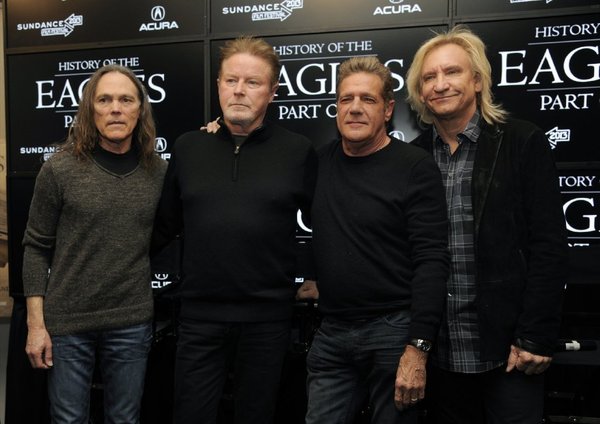 The Eagles landed at Sundance Film Festival the Saturday of Opening weekend for the premiere of the History of the Eagles Part 1, an excellent documentary directed by Alison Ellwood, produced by Alex Gibney and billed as “an intimate work woven of rare archival material, concert footage and never-before-seen home movies that explore the evolution and enduring popularity of one of America’s defining rock bands.” I can’t believe I missed the Eagles (Glenn Frey, Don Henley, Joe Walsh and Timothy B. Schmit) at a post film Q&A having had to take time to get over pressures of festival first day.
The Eagles landed at Sundance Film Festival the Saturday of Opening weekend for the premiere of the History of the Eagles Part 1, an excellent documentary directed by Alison Ellwood, produced by Alex Gibney and billed as “an intimate work woven of rare archival material, concert footage and never-before-seen home movies that explore the evolution and enduring popularity of one of America’s defining rock bands.” I can’t believe I missed the Eagles (Glenn Frey, Don Henley, Joe Walsh and Timothy B. Schmit) at a post film Q&A having had to take time to get over pressures of festival first day.
Reading up on their history, (which by the way, I lived through), I was impressed that they hired Alex Gibney knowing full well that the doc coming out of “Gibney & Company” will be in depth and authentic when the 1970s became the years of uncharted territory with music coming from folk, country and Americana root harmonies. It called to us to come out and hear the music play. The voting age was eighteen, the drinking age was eighteen, we were forever eighteen.
According to other film music sources that interviewed Gibney, his vision for the Eagles was to make “a great story about youth, rock and roll, passion and vitriol.” The doc, directed by Alison Ellwood acknowledged that she grew up listening to them. So did I. Through this work of bits and pieces, I watched every minute engrossed in backstory, personal opinions, philosophies, intimate conversations, storylines and archival footage bringing this previously untold story out of the backstage shadows and back into the limelight.
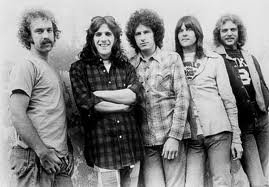 Just as the story connects the growing-up years with national current events and the burgeoning local music scene, 1970s music served as a soundtrack for young adulthood. Whatever came on the FM stations and out of college auditoriums, outdoor events and local bars started a following, yet nothing came close to the LA Country Rock sound of Southern California. Soon, country-rock bands flourished just about everywhere– some never hit paydirt despite the loyal audiences who followed their favorite bands through a six-night-a-week schedule. Then again, some got lucky.
Just as the story connects the growing-up years with national current events and the burgeoning local music scene, 1970s music served as a soundtrack for young adulthood. Whatever came on the FM stations and out of college auditoriums, outdoor events and local bars started a following, yet nothing came close to the LA Country Rock sound of Southern California. Soon, country-rock bands flourished just about everywhere– some never hit paydirt despite the loyal audiences who followed their favorite bands through a six-night-a-week schedule. Then again, some got lucky.
Glenn Frey is quoted as saying, “We’ve been reliving our lives the last two years while we worked on this. I was reminded of how much fun we had.” Henley added,”We were young, we made mistakes. We still make mistakes.” The Eagles were a notoriously private group, rarely allowing the press to infiltrate their tight circle. The film footage was shot for future media releases where they could control their images; however, tensions were already high and a break up was on the horizon, so the footage was sealed in a vault until now. A myth was created around the band. I never really knew why they broke up at the time but it made me unhappy.
The never-before-seen footage locked away for 30 years came from the Hotel California tour as well as previously unseen home movies from the period. And what a time it was. While the Eagles came out of the California folk-rock scene and the early part of the film is full of the music club history. That’s where it all began– on the East Coast as well as the West with the Troubadour, Jackson Browne, Poco, the Flying Burrito Brothers, the Stone Canyon Band, Bob Seger and the Linda Ronstadt Band –made up of Don Henley, Glenn Frey, Richard Bowden and Mike Bowden– who, along with session musician Randy Meisner, fledged out to become high-flying Eagles. 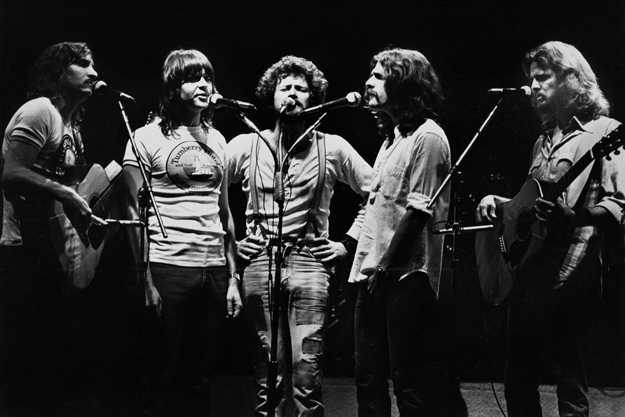
Drinking age in many states was 18 at the time (in New Jersey it was 1973). They built their following from a core of college and precollege males –who followed the females going to the bars, clubs, concerts– getting into the pedal steel guitars, multi part bluegrass harmonies with traditional material cut into a country rock sound. Frey and Henley wanted to move the band away from Bernie Leadon’s bluegrass banjo into rock and roll, a commitment that comes from Frey growing up in hard-rock central, Detroit. Don Felder’s hard-edged tones were the very contrast welcomed into the mix. Then, along with wildman Joe Walsh on stage, Felder started slowly playing licks on his double neck fused guitar that turned into an 11-minute dueling guitar meisters love fest with Hotel California. They brought the house down.
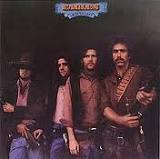 The Eagles debut album was recorded at London’s Olympic Studios with producer Glyn Johns and released in 1972. Desperado became the second studio album recorded at Island Studios in London, UK and released in 1973. Based on the Dalton gang and the Old West, Desperado was their “concept” album– conceptualized and realized through much hard drinking and drugs with stories usually involving cravings for female companionship– perhaps so, but only for a short while and hopefully the women would go away.
The Eagles debut album was recorded at London’s Olympic Studios with producer Glyn Johns and released in 1972. Desperado became the second studio album recorded at Island Studios in London, UK and released in 1973. Based on the Dalton gang and the Old West, Desperado was their “concept” album– conceptualized and realized through much hard drinking and drugs with stories usually involving cravings for female companionship– perhaps so, but only for a short while and hopefully the women would go away.
From the film concerts, cheers the audience as the concert-goers got more for their ticket price with an occasional girl dancing on stage butt naked. Stagehands who always had the best drugs available chose the “lucky girls” to join band members in wild, all-night-long, after parties. Casual sexual relationships, cocaine problems and alcohol contributed to their hard partying reputations. Fans couldn’t wait for follow up albums with On the Border, One of These Nights, Eagles Greatest Hits (1971–1975). The Long Run–the first Eagles album did not to feature founding member Randy Meisner who was eventually replaced by Timothy B. Schmit from Poco.
Poco was a band that never made it big despite the 11 albums Schmit and the other Poco members released in seven years. They were a great band working hard and putting on a solid concert, but never were able to make that breakthrough the Eagles had. In 1977, Randy Meisner refused to hit the high notes in an encore of Take It to the Limit, left the stage and did not come back. Frey asked Schmit to replace Meisner who quit the band. He joined the Eagles soon after.
As in every story, the reality was out there for everyone to live; meaning for almost every success, there was trouble. The women, drugs, bad management or no management, high-flying egos, taking sides when the infighting got nasty, internal pressures about the band’s direction or external reality with the record labels and the lawsuits. The ups and downs were skillfully intercut from each of the band’s remaining members (and former members), along with managers, agents, audio engineers and record producers. It was during the 1980s that most of the band cleaned up. Joe Walsh didn’t kick his addictions until the early 1990s. In Henley’s words, it was the “fine line between the American Dream and the American Nightmare.” The Eagles are getting ready to soar again.

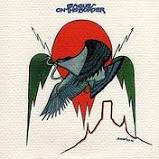
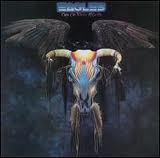



05/12/2013 at 8:39 pm
Your style is unique compared to other folks
I’ve read stuff from. Thanks for posting when you’ve got the opportunity,
Guess I will just book mark this web site.
05/14/2013 at 10:49 pm
Hey thanks. What I find quite that often online has a “generalness” quality because there aren’t many writing from experience, only what they read online. Then there are onlines that want immediate 500 words to post. Bloggers tend to copy & paste the first ones out the gate and post it as their own. Boring. Working on a history of this music going on during the 70s & 80s changing the Jersey music scene. Quite a story. Quite a ride. Keep you posted…
08/05/2013 at 4:58 pm
Awesome site you have here but I was wanting to know if you
knew of any community forums that cover the same topics discussed here?
I’d really like to be a part of online community where I can get responses from other experienced people that share the same interest. If you have any recommendations, please let me know. Many thanks!